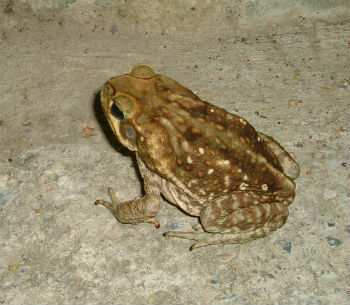Facilitated diffusion is a type of passive transport of substances across the cell membrane, which relies on the help of proteins. Occurs without ATP expense. Cell membranes are...
Selective permeability is a property of the plasma membrane that controls the entry and exit of substances from the cell. Through selective permeability, the membrane...
Fertilization or Fertilization is one of the stages of sexual reproduction, in which the sex cells or gametes unite, originating the zygote or egg cell. The zygote goes through many divisions...
Endosymbiosis is an ecological relationship that occurs when an organism lives inside another. The word endosymbiosis is derived from the Greek, endo "inside" and symbiosis "live together", ie...
Ovulation occurs when there is release of the female gamete by the ovarian follicles, this happens on the surface of the ovary and it moves to the fallopian tube. This phenomenon marks the period...
Histology is the branch of biology that studies tissues, their embryonic origin, their cell differentiation, structure and functioning. Animals are multicellular beings, that is, constituted...
Nerve cells make up the nervous tissue that makes up the organs and structures of the nervous system: brain and spinal cord, ganglia and nerves. There are two types of nerve cells the...
Catalase is an enzyme produced by almost all living organisms. It is responsible for the decomposition of hydrogen peroxide. Catalase is found in the organelle peroxisomes,...
Embryonic Appendices (allantoic, amnion, chorion and yolk vesicle) are structures that form from the ectoderm, endoderm and mesoderm embryonic leaflets. They arise during the...
Leukocytes, also called white blood cells, are blood cells produced in the bone marrow and lymph nodes. They are the main agents of our body's immune system, being...
Stem cells have the ability to transform into any cell in the body, thus being able to replicate several times, unlike other cells in the body. This kind of...
Neurons are the nerve cells responsible for propagating the nerve impulse. They make up the nervous system along with the glial cells. There are about 86 billion...
The human sperm is the male sex gamete or male reproductive cell. They are small cells, mobile and elongated in shape. These tiny, light structures are just...
Gametes are the sex cells of all living things. All sexually reproducing organisms need to produce gametes, both plants and animals. There are male gametes that are...
Test your cell knowledge with the 10 questions below. Check out the comments after the feedback to get your questions answered. Question 1 Cellular Biology, too...
Phagocytosis is a type of endocytosis that consists of the engulfment of solid particles by the cell. To carry out phagocytosis, cells emit cytoplasmic projections, pseudopods,...
Retroviruses are a type of virus that contains RNA associated with the reverse transcriptase enzyme as genetic material. Viruses can be classified according to their genome, made up of DNA...
The parenchyma is the tissue composed of cells that perform a specific function in the organ where they are located. In animals, the parenchyma forms the functional part of organs such as the kidneys,...
The desmosome is a type of specialization of the plasma membrane. Its function is to hold cells together. The term desmosome comes from the Greek desmos "bonding" and somatos...
Bacteriophages are viruses that specifically infect bacteria. Also called phages, these viruses adhere to the bacterium, pierce its cell wall and inject its content into the host...
Glial cells make up nervous tissue along with neurons. Glia cells, also called gliocytes or neuroglia, can be of two types: microglia or macroglia. Besides...
Autophagy refers to the process of degradation and recycling of cell components. All cells perform autophagy. Initially, scientists believed that autophagy induced death...
The cytoplasm of eukaryotic and prokaryotic cells is filled with a viscous and semi-transparent matrix, the hyloplasm or cytosol. In the hyloplasm are molecules and organelles...
Celoma is a body cavity of animals characterized as triblastic and located inside the mesoderm. Entirely covered with mesodermal fabric, the coelom is filled with a liquid...
The cell is the smallest unit that constitutes living beings. While some organisms are formed by only one cell, such as bacteria, there are multicellular beings, which have a large...
Interphase is one of the main phases of the cell cycle and occurs in three stages: G1, S and G2. It can be said that it is the stage of preparation of the cell for division, as it grows and...
Bone marrow is a soft tissue that fills the interior of bones, and is a place of production of the blood's figured elements: red blood cells, white blood cells and platelets. In newborns, the medulla...
Pinocytosis is a type of endocytosis that consists of engulfing liquid particles. This process can also be called fluid phase endocytosis. Endocytosis consists of the aggregation...
Cells are considered the smallest part of living organisms. In our body there are more than 10 trillion cells! In addition to the characteristics studied by Cytology, there are some...
Cell cycle is the life span of the cell, which like people, is also born, grows and reproduces. This cycle is very important, because all the time there are cells that...
Gametogenesis is the process of formation of gametes, with genetic characteristics that will be transmitted to the descendants of a species. In human gametogenesis, for example, the gamete...
DNA replication corresponds to the duplication of genetic material, as DNA makes a copy of itself. The two strands that make up the molecule separate and guide the formation of chains...


